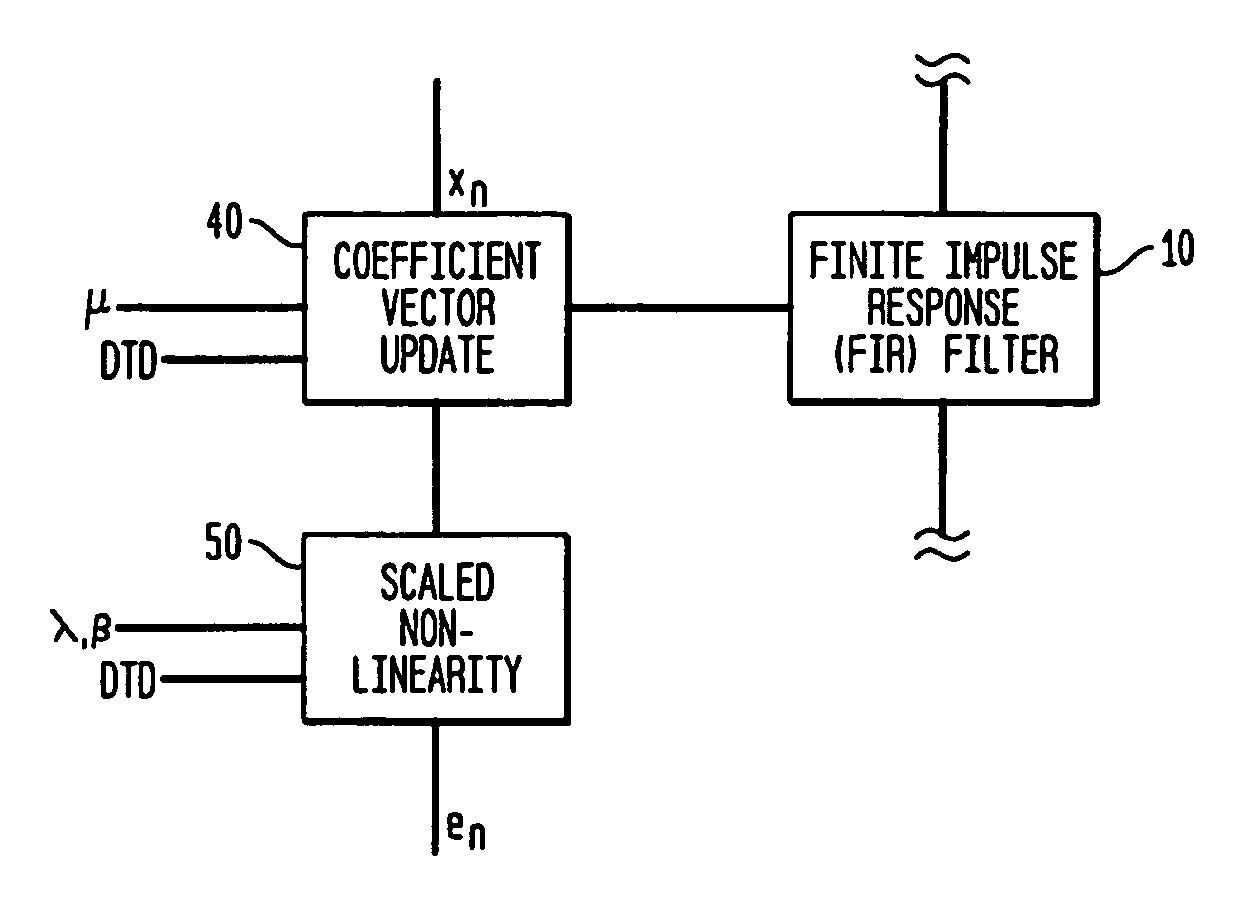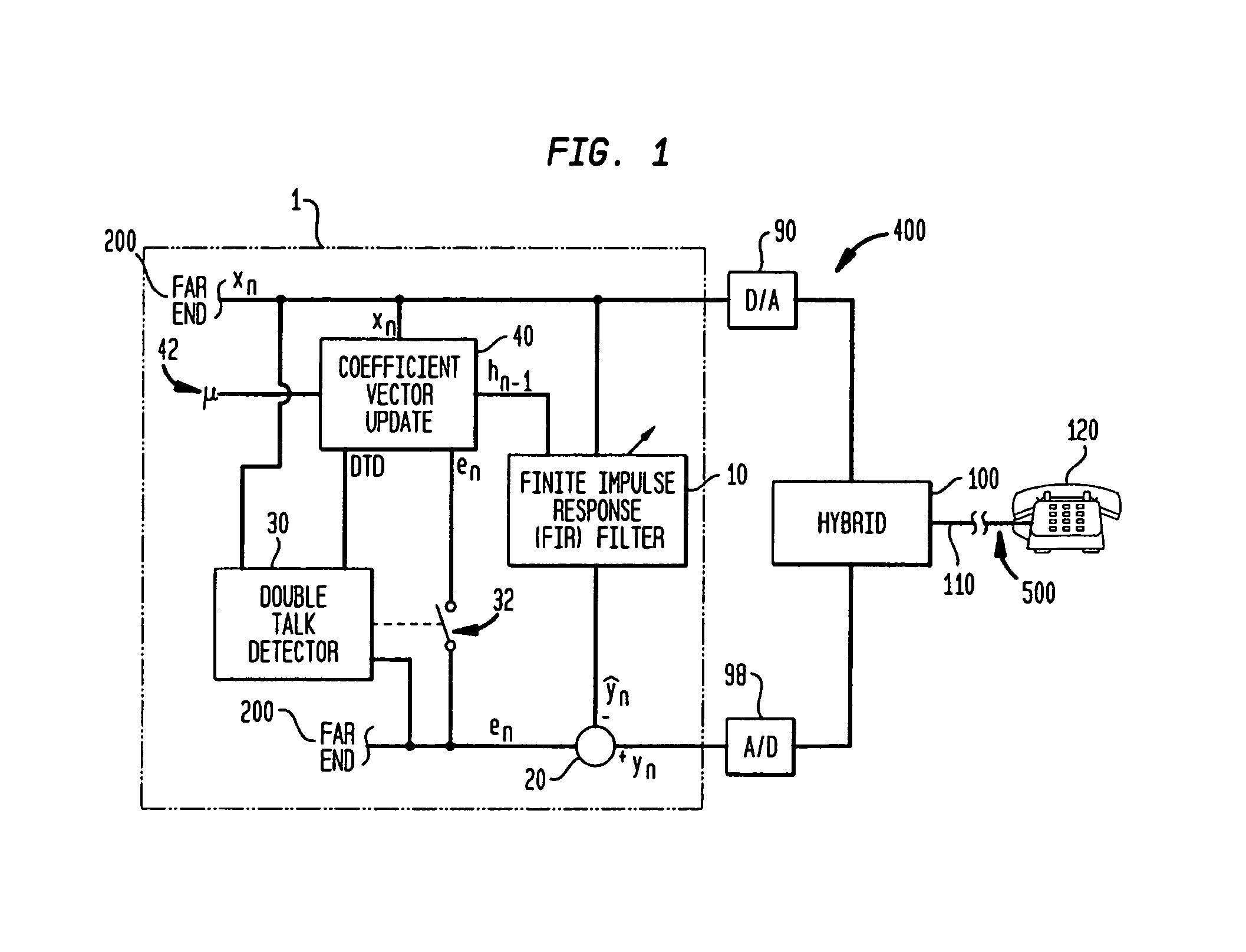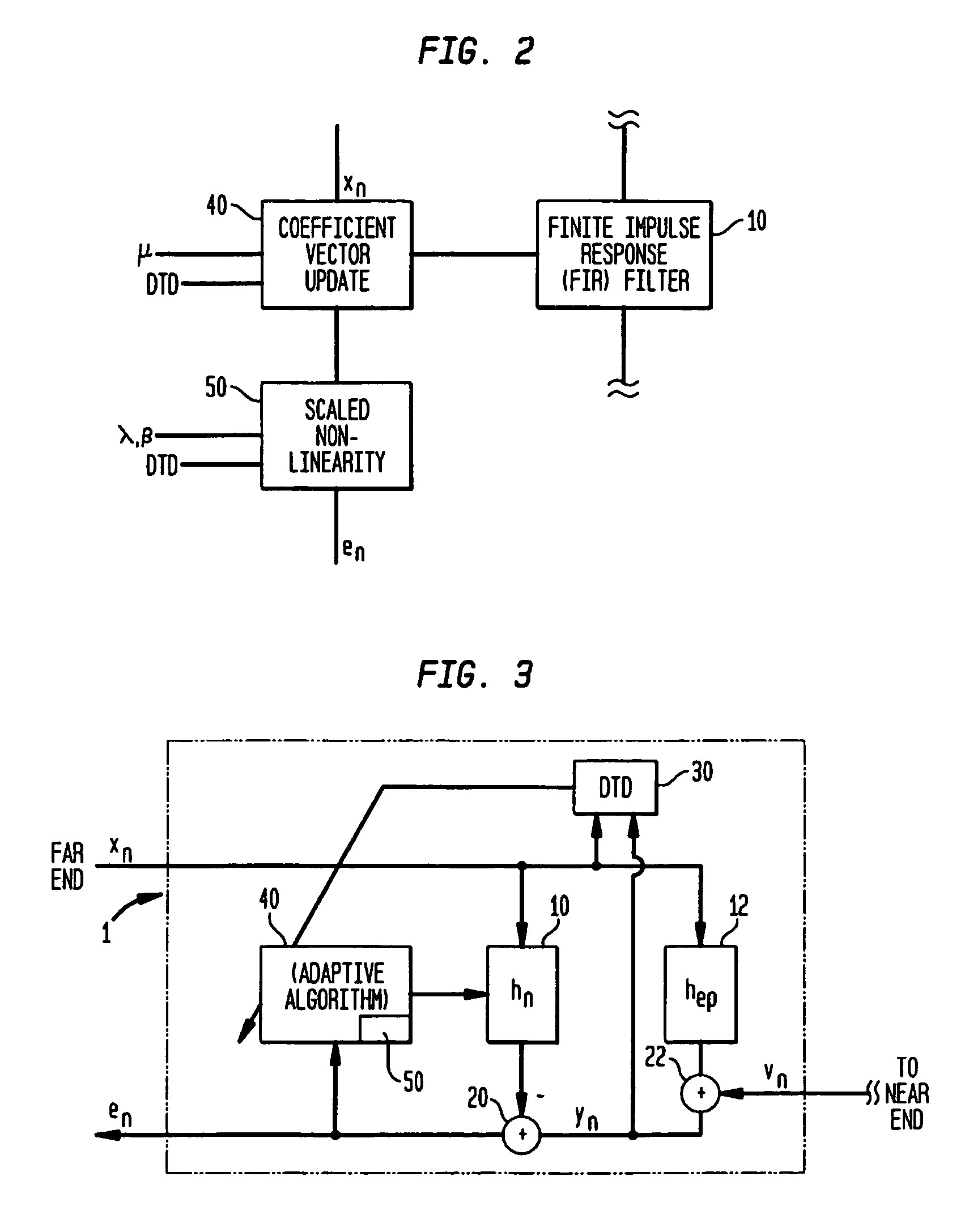Adaptive filter for network echo cancellation
- Summary
- Abstract
- Description
- Claims
- Application Information
AI Technical Summary
Benefits of technology
Problems solved by technology
Method used
Image
Examples
Embodiment Construction
[0043]With initial reference to FIG. 1, which is a schematic diagram of a preferred echo cancelling system in accordance with the present invention, there is shown, in a dashed line box, an echo canceller 1 forming a part of a network telephone circuit 400 which is connected via digital-to-analog (D / A) converter 90 to an analog hybrid 100 which connects, via local loop 110, to a telephone line or other telephone instrument 120 at a near end 500 in a manner known in the art. Communications from the near end pass through local loop 110 and through hybrid 100 through an analog-to-digital converter 98 for communication to a far end, represented generally at 200. Situated across the network circuit, in parallel to the hybrid 100, is a finite impulse response (FIR) filter 10 connected through summing node 20. In a manner known in the art, fast impulse response filter 10 attempts to duplicate the impulse response of any discontinuity at the hybrid connection point, thereby cancelling echoe...
PUM
 Login to View More
Login to View More Abstract
Description
Claims
Application Information
 Login to View More
Login to View More - R&D
- Intellectual Property
- Life Sciences
- Materials
- Tech Scout
- Unparalleled Data Quality
- Higher Quality Content
- 60% Fewer Hallucinations
Browse by: Latest US Patents, China's latest patents, Technical Efficacy Thesaurus, Application Domain, Technology Topic, Popular Technical Reports.
© 2025 PatSnap. All rights reserved.Legal|Privacy policy|Modern Slavery Act Transparency Statement|Sitemap|About US| Contact US: help@patsnap.com



